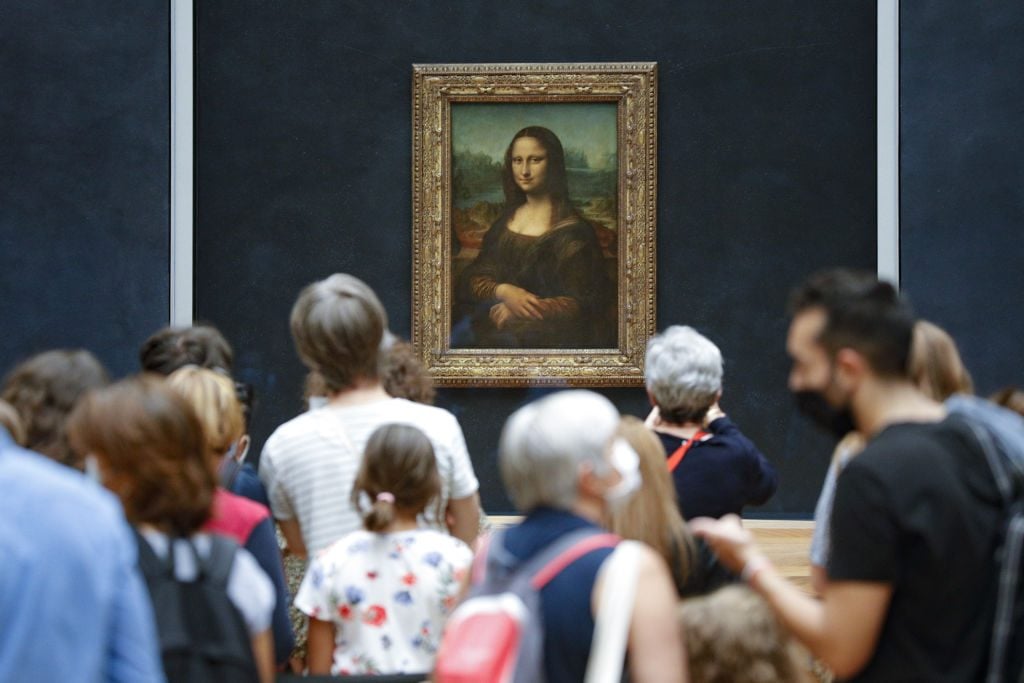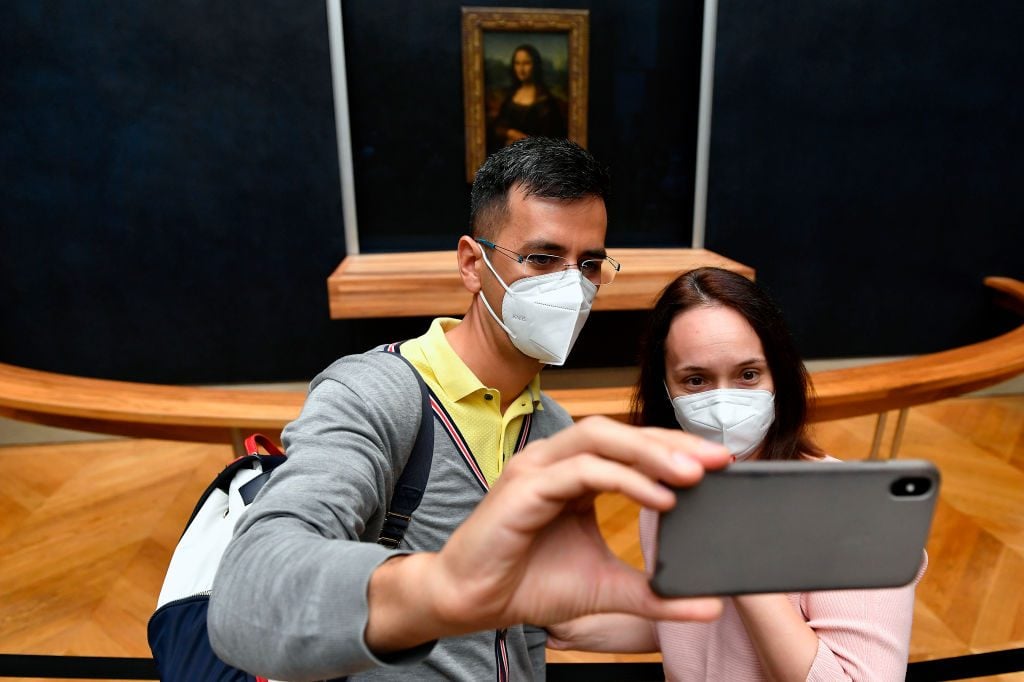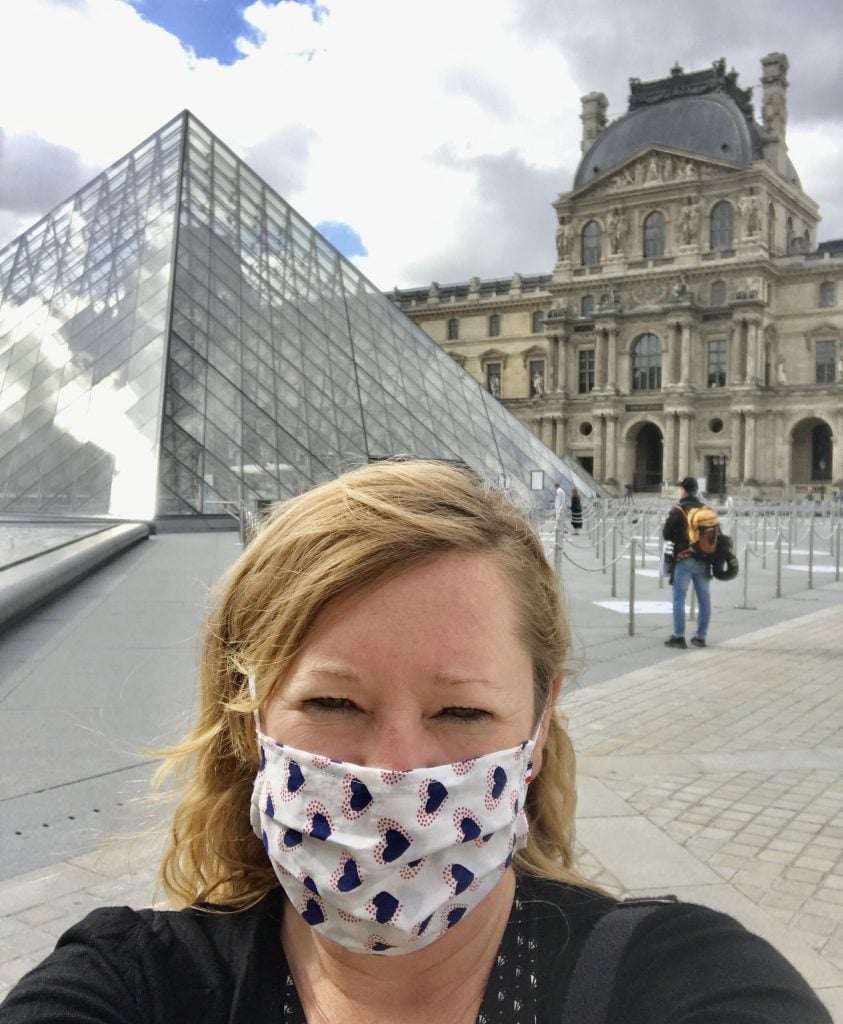Art World
What’s It Like to Wander the Louvre in the Age of Social Distancing? We Spoke With the Reopened Museum’s First Visitors
The Louvre—which is accustomed to getting 30,000 visitors a day—sold only 7,000 tickets for its reopening on Monday.

The Louvre—which is accustomed to getting 30,000 visitors a day—sold only 7,000 tickets for its reopening on Monday.

Naomi Rea

A year ago, getting to see the Mona Lisa without thronging crowds was a privilege afforded to the likes of Beyoncé and Jay Z.
But big crowds are now unimaginable at the Paris museum, which reopened on Monday, July 6, after more than three months of lockdown.
The closure—its longest since World War II—meant a €40 million drop in revenue for the institution, which typically accommodates 30,000 people a day.

Visitors wearing face masks take selfies in front of Mona Lisa on July 6, 2020. Photo by Aurelien Meunier/Getty Images.
On Monday, just 7,000 people reserved tickets—an unsurprising figure, given that 75 percent of the museum’s visitors come from overseas. The Louvre says it expects more local crowds for the foreseeable future.
But at least some tourists did make it on Monday, including Steve, who declined to give his first name.
“We think it was nice and not so crowded because they don’t have so many international tourists yet,” Steve, who visited with a friend from Finland, told Artnet News.
For the moment, 30 percent of the museum remains closed, including the galleries devoted to the arts of Africa, Asia, Oceania, and the Americas, as well as the lower level of the Islamic galleries.
As expected, face masks are now a must. Tickets, with set time entries, must be reserved online, and visitors must follow one-way color-coded trajectories throughout the museum to avoid bottlenecks. Social-distancing markers now adorn the floors of the 16th-century former royal palace, and hand-sanitizing stations are peppered throughout.

Lily Heise visiting the museum. Photo courtesy Lily Heise.
Lily Heise, a museum visitor who lives in Paris and works as a travel writer, told Artnet News she immediately booked her ticket, noting that she would normally avoid the “unbearable” crowds that show up during the high summer season. The new situation made visiting the museum “all the more desirable,” she said.
“The quieter sections of the museum were blissfully peaceful and you could almost feel like you had the museum to yourself,” Heise said. She likened the experience to visiting the Louvre on its typically quieter late openings, on Wednesday and Friday evenings.
On Twitter, some visitors expressed particular excitement at seeing the Mona Lisa, which the Louvre is allowing people to see in small groups, without the usual “chaotic mob.”
But visitors we spoke to said the Denon Wing—where the Mona Lisa, the Winged Victory of Samothrace, and French large-format paintings live—was still the busiest part of the museum, which has long been an issue at the Louvre.
“I didn’t go for Mona Lisa but I saw her and it was pretty crowded,” said another early-bird returner to the museum, Cristina Birsan, an administrator at a Parisian university. “I thought that it would be a kind of more intimate atmosphere, but not quite.”